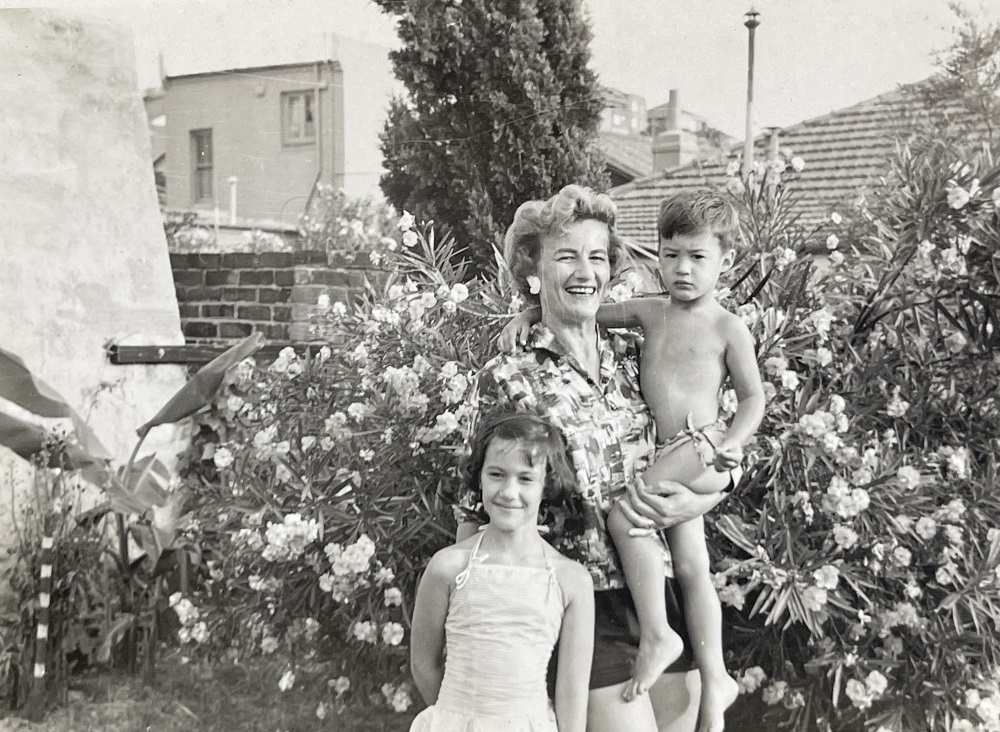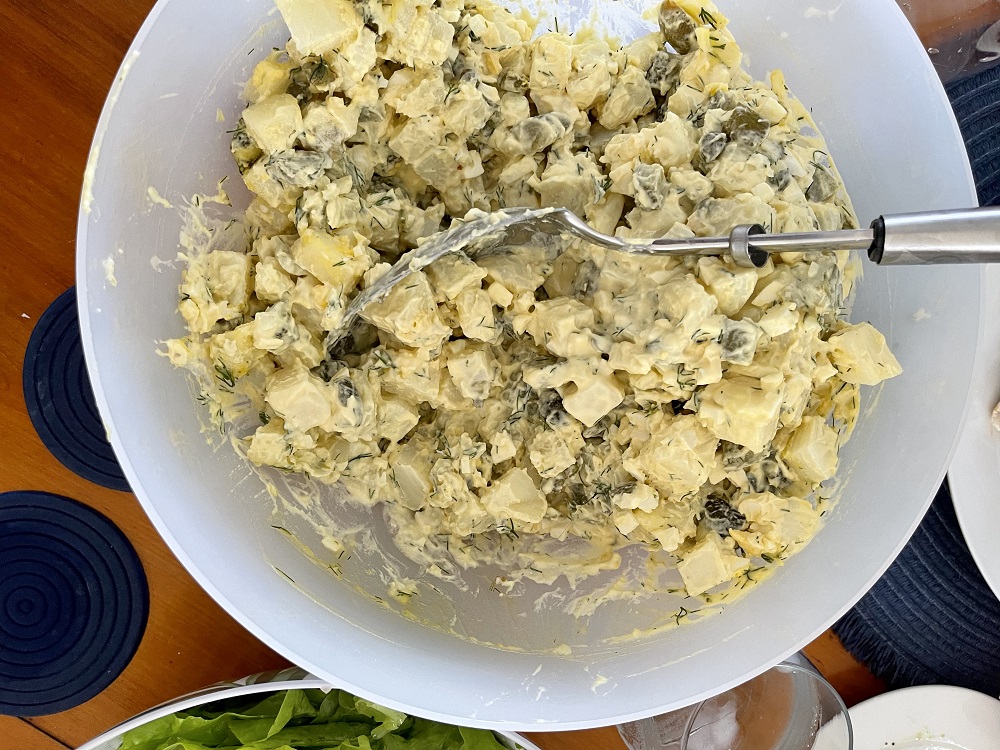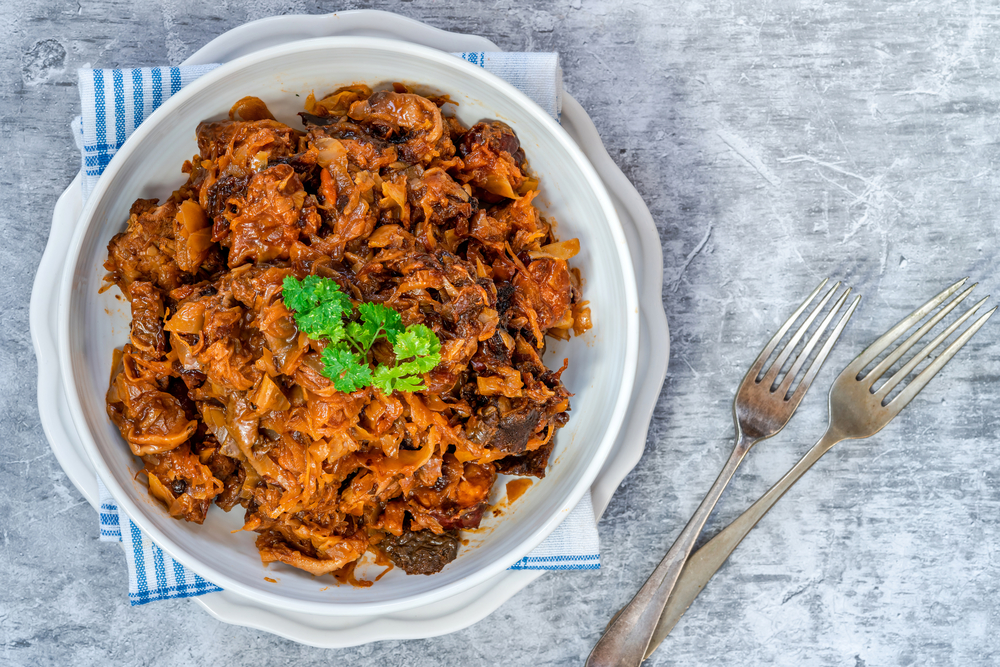Learning to cook with love

My mother Anne (‘Hanka’ in Polish) was a natural-born cook. She never used a recipe but cooked by eye, aided by years of experience. Her food always tasted delicious, whether it was Polish fare or recipes she’d picked up from her Aussie friends as a ‘new Australian’ in Sydney in the 1950s. I recall roast dinners or steaks alongside appetisers of herring with onion and sour cream served on pumpernickel bread. Weird but, somehow, it all tasted good.
My mum would enliven meals with those wonderful European delicacies, such as best-quality Polish hams, tongue, salami, pâté, dill-pickled cucumbers, fresh dill, sauerkraut and grated horseradish.
What sticks in my taste buds’ memory is her rich cheesecake with eggs, vanilla, sour cream and a type of farm cheese that she’d buy from an European deli at Haymarket, called Cyril’s Delicatessen. Also her excellent Polish potato salad, with its flavours of dill and pickled cucumbers.
While we weren’t Jewish, we had a lot of Jewish friends because she co-owned a business in Surry Hills, making evening wear: think cocktail frocks and long dresses. Her business partner Erna Potok, who looked after selling and marketing the dresses, was a Jewish woman. Traditional Jewish dishes such as cabbage rolls and gefilte fish were often on the table, and I enjoyed them. I still do!

Memories of Christmas
Christmas was always huge. As is traditional in Europe, we would celebrate on Christmas Eve, with a meatless dinner that included every type of fish and seafood (lobster, crab, oysters and mussels) you could imagine. It was a fusion between superb Australian produce and old-world Polish customs.
No one would dare to start eating until we had each exchanged a kiss and swapped a sliver of oplatek – thin white Communion wafers, which my grandmother Babcia would post from Poland every Christmas. Then we’d tuck into the food to our hearts' content.
Easter was pretty big, too. As a child, I loved peeling my mum’s brown hard-boiled eggs, which she’d coloured by boiling them in a large pot of water with brown onion skins. Ah, memories.
Anne’s Polish Potato Salad
My mother used to prepare a huge bowl of this salad every Christmas. We would feast on it for days as we ate our way through the turkey and ham. It tasted better and better as we reached the end! The dill pickled cucumbers (we use Polski Ogorki) and capers add just enough tang to counterbalance the smoothness of the potatoes. You can make the dressing in a food processor or with a rotary mixer.
Serves 15–20

- 2 kg potatoes (about 8 large potatoes)
- 8 eggs, hard-boiled
- 500 g jar dill pickled cucumbers, drained
- ¼ cup capers, drained
- ¼ cup chopped fresh dill
- Dressing
- 2 egg yolks
- juice of 1 lemon
- 1 teaspoon mild French mustard
- freshly ground black pepper
- 1 cup olive oil*
Boil the unpeeled potatoes until just cooked but still firm. Drain and set aside to cool, about 30 minutes.
Meanwhile, to make the dressing, place the yolks in the bowl of the processor with lemon juice, mustard and pepper. With processor running, pour a thin stream of oil into the processor, a little at a time, until the mixture thickens. Gradually add as much of the oil as is needed to make a stiff mix. Do not over mix.
When the potatoes are cool enough to handle, slip off the skins, cut into small (1 cm) dice and place in a large mixing bowl.
Shell the boiled eggs and chop finely. Slice the drained cucumbers lengthwise, then into 1 cm pieces. If the capers are large, slice in half.
Add the chopped egg, cucumbers and capers to the bowl. Spoon dressing over, add dill and mix with a large spoon to combine. Cover and refrigerate until needed. The salad can be made three or four days ahead and stored in the refrigerator for up to 10 days.
* Can be substituted with ½ cup olive oil and ½ cup sunflower or canola oil
Anne’s Bigos (Hunters’ stew)
It’s said there are as many versions of Poland’s famed bigos as there are cooks in Poland! Here, I present the version my mother taught me, which she no doubt adapted to our warmer Australian climate and available ingredients. It’s a hearty, warming dish that’s wonderful on cold nights in winter. Bigos is best made 2 or 3 days ahead then re-heated just before serving.
Serves 8–10

- 1 tablespoon butter, plus extra
- 1 onion, chopped
- 2 rashers bacon, chopped (or 100 g ham pieces)
- 1 tablespoon butter, extra
- 500 g diced lean pork
- ¼ fresh Savoy cabbage (about 500 g), finely shredded
- 700 g can sauerkraut
- 100 g Polish salami, chopped
- 1 large green cooking apple, peeled and chopped
- about 6 cups water
- ½ teaspoon caraway seeds
- freshly ground black pepper
Heat the butter in a frying pan then gently fry the onion and bacon for 2–3 minutes until soft. Transfer the onion mixture to a large casserole or heavy-based saucepan. Add another tablespoon of butter to the pan and heat, then add half the diced pork. Sauté on all sides to just brown, then transfer to the casserole. Repeat with the remaining pork.
Drain the sauerkraut and rinse once with cold water, if necessary, to remove excess salt. Add to the casserole along with the salami, apple and water. Add just enough water to make the mixture loose but not too watery. As a guide, the water should come three-quarters up the side of the sauerkraut mixture in the casserole.
At this stage, the dish looks more like cabbage than meat. This is fine; the cabbage will soften and shrink in size during cooking. Cover and simmer gently on low heat for 45 minutes. Add the caraway and pepper, and continue to simmer for a further 45 minutes.
Serve with boiled potatoes and soft rye bread.



